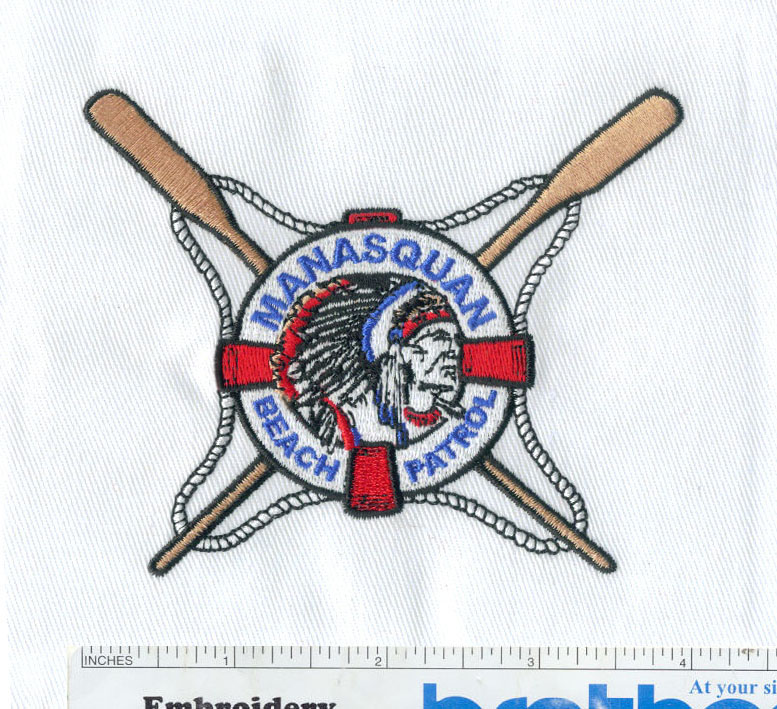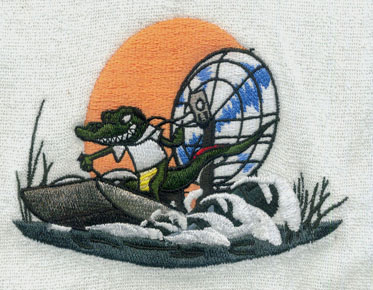The Artistry of Embroidery Fonts: A Stitched Journey into Creative Expression
Embroidery, a timeless craft that has captivated the hearts of artisans and hobbyists for centuries, is a form of textile art that uses needle and thread to create intricate designs on fabric. While traditional embroidery primarily focused on intricate patterns and motifs, the modern evolution of this craft has introduced a fascinating element that adds a new layer of creativity and personalization: embroidery fonts. Just as fonts in typography lend distinct personalities to written words, embroidery fonts breathe life and character into stitched designs, allowing for endless possibilities of expression. In this blog post, we'll delve into the captivating world of embroidery fonts, exploring their history, types, design considerations, and ways to incorporate them into your embroidery projects.
The Evolution of Embroidery Fonts
Embroidery, with its rich history dating back thousands of years, has undergone various transformations across cultures and eras. The concept of embroidery fonts, however, emerged relatively recently with the advent of technology and the digitization of designs. Prior to this, hand-stitched monograms and lettering were common, but the ability to replicate intricate fonts with precision was limited.
With the digital age came the opportunity to translate diverse font styles into embroidery patterns, allowing for greater versatility and customization. Modern embroidery machines equipped with advanced software can effortlessly create letters of various sizes, styles, and orientations, mirroring the typefaces used in print and digital media. From elegant script fonts to bold block letters, the evolution of embroidery fonts has opened a new realm of possibilities for both seasoned artisans and newcomers to the craft.
Types of Embroidery Fonts
1. Script Fonts
Graceful and flowing, script fonts emulate handwritten calligraphy. They lend an air of elegance and sophistication to embroidered text, making them popular choices for monogramming and decorative lettering on garments, linens, and accessories.
2. Serif Fonts
Characterized by the small lines or strokes extending from the edges of the letters, serif fonts exude a classic and timeless feel. These fonts are excellent for projects that require a traditional touch, such as vintage-inspired designs or personalized gifts.
3. Sans Serif Fonts
Clean, simple, and modern, sans serif fonts lack the decorative strokes found in serif fonts. They offer a contemporary look and are often chosen for projects with a sleek and minimalist aesthetic.
4. Decorative Fonts
These fonts are imaginative and unique, often incorporating intricate flourishes, motifs, and embellishments. Decorative fonts are perfect for adding an artistic flair to embroidery projects, making them stand out as true works of art.
Design Considerations for Embroidery Fonts
Choosing the right embroidery font is crucial to conveying the intended message and aesthetics of your project. Here are some key considerations to keep in mind:
1. Readability
While artistic fonts can be captivating, readability should not be compromised. Ensure that the chosen font is easily legible, especially when dealing with small letter sizes or intricate designs.
2. Context and Purpose
The context of your embroidery project will dictate the appropriate font style. A formal event invitation may call for an elegant script font, while a playful children's garment could benefit from a whimsical and fun font.
3. Embroidery Technique
Different embroidery techniques may influence font choice. For example, satin stitches work well with bold block letters, while delicate script fonts may be better suited for backstitch or stem stitch.
4. Fabric and Thread Choice
Consider the fabric type and thread material when selecting an embroidery font. Thicker fabrics may require larger, bolder fonts, while delicate fabrics could accommodate finer and more intricate fonts.
Incorporating Embroidery Fonts into Projects
Embroidery fonts can elevate any project from mundane to exceptional. Here are some creative ways to incorporate them:
1. Monogramming
Personalize garments, towels, and accessories with monograms using an elegant script or classic serif fonts. Monogrammed items make cherished gifts and heirlooms.
2. Home Décor
Add a touch of charm to your living spaces by embroidering meaningful quotes, family names, or dates on throw pillows, wall hangings, and tablecloths.
3. Fashion Embellishments
Transform plain clothing into stylish ensembles by stitching initials, words, or symbols onto collars, cuffs, or pockets using creative fonts.
4. Quilting
Enhance your quilting projects by integrating embroidered lettering or phrases that tell a story or convey a theme.
5. Embroidered Art
Use embroidery fonts as a central element in standalone pieces of textile art. Combine different fonts, colors, and textures for a visually stunning effect.
Conclusion
Embroidery fonts have breathed new life into the world of textile art, offering a dynamic means of creative expression and personalization. As embroidery enthusiasts and newcomers alike continue to explore this captivating craft, the artistry of embroidery fonts will undoubtedly play a pivotal role in shaping the future of the craft. Whether you're adorning a garment with an elegant monogram, stitching a heartfelt quote onto a pillow, or crafting intricate embroidered art, the world of embroidery fonts invites you to explore, experiment, and create with stitches that speak volumes. So, pick up your needle and thread, and let your imagination run wild as you stitch your way through the captivating universe of embroidery fonts.



